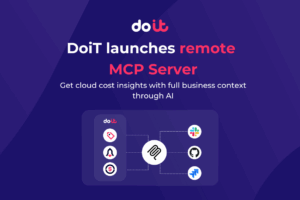12 Essential FinOps KPIs for Enterprise Cloud Management
As cloud costs continue to claim a growing share of IT budgets, organizations face mounting pressure to demonstrate value from these investments. Financial Operations, or FinOps, has emerged as a cross-functional discipline that brings together finance, engineering, and business teams to create financial accountability around cloud spending, enabling organizations to maximize their business value while optimizing costs.
But without proper measurement and the right metrics framework, even the most well-intentioned FinOps initiative will struggle to move beyond basic cost tracking to deliver meaningful optimization insights.
This article examines the 12 most essential FinOps key performance indicators (KPIs) that give organizations the visibility, control, and analytical depth needed to manage cloud costs. These KPIs transform cloud spending from a cost center into a strategic capability, enabling precise unit cost tracking, maintaining budget alignment across teams, and creating clear attribution between cloud investments and business value delivery.
What are FinOps KPIs?
FinOps KPIs are operational, financial, and business metrics that help organizations monitor, optimize, and align cloud usage with business value. They act as a guide for cross-functional teams, helping them make smart decisions about cloud resources while balancing cost savings with business outcomes.
Whereas traditional IT metrics may focus only on performance, FinOps KPIs combine financial accountability with operational efficiency and business unit economics. This provides a more complete picture of cloud investments that becomes increasingly sophisticated as FinOps maturity increases.
Why track FinOps KPIs?

Tracking FinOps KPIs is essential for managing today’s complicated cloud setups effectively. With global spending on public cloud services forecasted to double between 2024 and 2028—and $805 billion projected for 2024 alone—organizations face increasing spend variability and unpredictability driven by elastic cloud consumption patterns. Teams across finance, engineering, and platform operations need visibility into not just how much is being spent, but whether that spending is actually delivering business value.
Effective FinOps KPIs help organizations:
- Identify waste and optimization opportunities
- Catch overspending or inefficiencies early, providing warning signals before they become serious issues
- Align cloud investments with business objectives
- Create accountability across teams
- Make data-driven decisions about resource allocation
- Demonstrate the ROI of cloud investments to stakeholders
Is there an ideal minimum spend before FinOps KPIs matter?
Organizations with bigger cloud setups might see the biggest financial gains from using FinOps practices, but there’s no real minimum spend to make it worthwhile. Even smaller businesses with monthly cloud bills can benefit from setting up FinOps KPIs early, especially if they have complex organizational structures. And while smaller organizations might not need complex KPIs right away, they can still track simpler metrics like percentage of unallocated spend or cost-per-service.
The consideration should be more about complexity rather than absolute dollar amounts. Organizations with multicloud environments, dozens of accounts, or rapid growth trajectories should prioritize FinOps KPI implementation regardless of current spend. Early adoption of FinOps practices lays a foundation for scalable governance as cloud usage grows, so in many cases, sooner is often better.
12 essential FinOps KPIs
Keeping an eye on the right FinOps KPIs helps you manage cloud costs effectively and get the most out of your cloud investments. These metrics should give teams the insights they need to stay financially accountable, make smart decisions, and use resources efficiently.
Here are 12 important KPIs to keep in mind when rolling out FinOps practices:
1. Cloud spend forecast accuracy
This KPI measures how closely your actual cloud spend aligns with forecasted spend. Expressed as a percentage, higher numbers indicate better forecasting capabilities, typically aiming for 90%+ accuracy. Improving this metric requires close collaboration between finance and engineering to understand usage patterns and anticipate projects that might affect resource consumption.
2. Resource utilization rate
Resource utilization tracks how efficiently you’re using provisioned cloud resources across compute, storage, and other services. Low utilization rates (under 40%) often signal oversized resources or idle instances that continue incurring costs without delivering value. While most organizations should target 60%–70% utilization for non-production and 70%–80% for production workloads as a general guideline, these targets should be applied contextually.
Many workloads experience usage spikes at specific times of day, leading to lower average utilization despite appropriate provisioning. Additionally, resource requirements vary across dimensions. For example, a service might show low CPU utilization but heavily use memory, storage, or network resources. To optimize effectively, it’s important to examine how all types of resources are used and understand the specific patterns of each workload, rather than relying on overall metrics alone.
3. Percentage of cloud waste
Cloud waste represents resources being paid for but not delivering business value. This includes idle resources, oversized instances, and orphaned volumes. Studies consistently show that organizations waste 30% or more of their cloud spend, conveying a clear opportunity for cost optimization. Measuring and reducing this percentage directly impacts your bottom line. It’s also worth mentioning that waste doesn’t necessarily mean unused resources. It could also mean overprovisioning given the demand.
4. Cost per workload
Breaking down cloud costs by workload, application, or business unit provides granular visibility into which components drive spending. This metric creates accountability by linking costs to specific business functions and helps prioritize cloud cost optimization efforts toward the most expensive workloads. Tracking cost per workload over time also reveals whether efficiency is improving or remaining stagnant.
5. Commitment-based discount coverage
Major cloud providers offer significant discounts (sometimes up to a staggering 72%) for committing to a certain level of usage. This KPI measures what percentage of your eligible cloud spend is covered by commitment-based discounts like AWS Reserved Instances, Azure Reserved VM Instances, or Google Committed Use Discounts. While large discounts are valuable, most enterprises should prioritize flexibility over savings alone. Aim for the highest possible discounts on predictable workloads with Reserved Instances (RIs), and use Savings Plans (SPs) to clean up the variability.
6. Return on investment (ROI) for cloud expenditures
While more complex to calculate than other KPIs, cloud ROI is needed for demonstrating business value. This metric compares the benefits gained (revenue generated, operational savings, improved performance) against cloud costs. Organizations can calculate this at different levels—by project, department, or organization-wide—depending on their needs.
7. Unit cost metrics
Unit economics provide context for cloud spending by relating costs to business outcomes. Unit costs should tie to value streams to enable informed trade-offs. Examples include cost per customer, cost per transaction, cost per user, or cloud infrastructure cost as a percentage of revenue. These metrics show if your cloud spending is keeping up with business growth or if costs are starting to snowball out of hand.
8. Budget vs. actual spend variance
This simple and straightforward metric tracks the gap between planned and actual cloud spending. Big differences—whether you’re overspending or underspending—should be looked into, as they might point to poor planning, unexpected usage, or missed chances to optimize. Try to keep those variances within ±5%–10%.
9. Cost avoidance
Cost avoidance measures the potential savings from FinOps efforts that prevent unnecessary spending before it happens, distinct from cost savings, which represent actual reductions in existing spend. While cost savings reduce current expenditures, cost avoidance prevents new costs by taking proactive measures. Examples of cost avoidance strategies include rightsizing instances before deployment, implementing governance policies that prevent oversized resource provisioning, setting up autoscaling policies, or establishing architectural review gates.
Tracking this metric shows the preventive impact of your FinOps program and helps build the case for investing in additional optimization tools and proactive governance.
10. Storage tier efficiency
Storage often represents a significant portion of cloud spending. This KPI measures how effectively you’re utilizing different storage tiers based on access patterns and performance needs. Shifting rarely accessed data to cheaper storage options can significantly cut costs while still keeping performance levels where they need to be.
11. Hourly cost per CPU core
This metric breaks down compute costs and levels the playing field across different instance types and providers, making comparisons more straightforward. By tracking cost per CPU core hour, organizations can identify which workloads or environments deliver the best value and make more informed decisions when selecting instance types.
12. Cloud cost as a percentage of revenue
For commercial organizations, this KPI provides important context by relating cloud spending to overall business performance. Optimal percentages vary widely by industry—SaaS companies might expect a higher range, while other organizations in IT, media, or ecommerce might target something completely different. However, tracking this ratio over time reveals whether cloud costs are scaling appropriately with business growth.
How org size and other factors impact KPIs

While all 12 above KPIs provide valuable insights, their relative importance varies based on several factors:
Organization size influences which KPIs demand immediate attention. Smaller organizations (under $10K monthly cloud spend) should prioritize utilization rates, waste percentage, and budget variance—metrics that engineering teams can act on immediately. Enterprises with mature cloud practices can tackle workload-specific unit economics and ROI calculations that require cross-team collaboration and sophisticated tagging strategies.
Industry context also shapes priorities. SaaS companies should emphasize unit cost metrics and cost per customer to track product economics, while financial services firms often prioritize commitment-based discounts and forecast accuracy to meet regulatory compliance and budget predictability requirements.
Cloud maturity determines implementation sequence. Organizations new to the cloud should establish baseline measurements for spend variance and resource utilization—actionable metrics that platform teams can optimize quickly. As maturity increases, focus shifts from reactive cost control to proactive business value alignment through advanced metrics like cost avoidance and workload-specific ROI.
Multicloud environments require standardized KPIs that work across providers. Start with provider-agnostic metrics like cost as percentage of revenue and unit economics, then layer on normalized views of provider-specific discounts and commitment coverage for comprehensive cost optimization.
Getting started with FinOps KPIs
With that understanding of FinOps and the key metrics involved, the next question is how to start implementing them in your organization.
Here are some initial steps to help guide you:
- Align teams through structured workshops. Successful FinOps implementation absolutely requires cross-functional collaboration. Start with a two-hour alignment workshop bringing together finance, engineering, and business stakeholders. Define three to five shared success metrics (like reducing waste by 20% or improving forecast accuracy to 90%), assign metric owners, and establish monthly review cadences. This structured approach ensures metrics serve business objectives rather than collecting data no one cares about.
- Establish a tagging strategy with enforcement. Detailed resource tagging forms the foundation for meaningful FinOps metrics. Begin with mandatory tags: cost-center, environment, application, and owner. Use cloud governance policies to automatically reject untagged resources and implement tag inheritance for new deployments. Start with 80% tagging compliance before advancing to complex KPIs. Without proper tagging, many advanced metrics become nearly impossible to calculate accurately.
- Adopt a continuous feedback loop with automation. FinOps is an iterative process, not a one-time implementation. Schedule biweekly KPI reviews with trend analysis and monthly optimization sprints. Implement dedicated FinOps tools that automate data collection, send threshold alerts, and generate executive dashboards. This automation lets your team spend less time on manual reporting and more time on analysis and taking action.
Unlocking cloud value through data-driven decisions

Putting these key FinOps KPIs in place lays the groundwork for smarter cloud cost management, but the real value comes when you turn those raw numbers into actionable insights. DoiT’s data and analytics solutions help organizations reduce cloud waste through automated anomaly detection, real-time cost attribution, and predictive budget modeling that prevents overruns before they happen.
By starting with the metrics most relevant to your current cloud maturity and business context, you can build a culture of cost accountability that scales with your cloud journey. Organizations that implement structured FinOps KPI programs typically see 15%–30% cost reductions while improving deployment velocity.
Ready to transform your cloud cost management? Download our comprehensive FinOps KPI implementation guide with templates, stakeholder alignment frameworks, and proven optimization playbooks.


